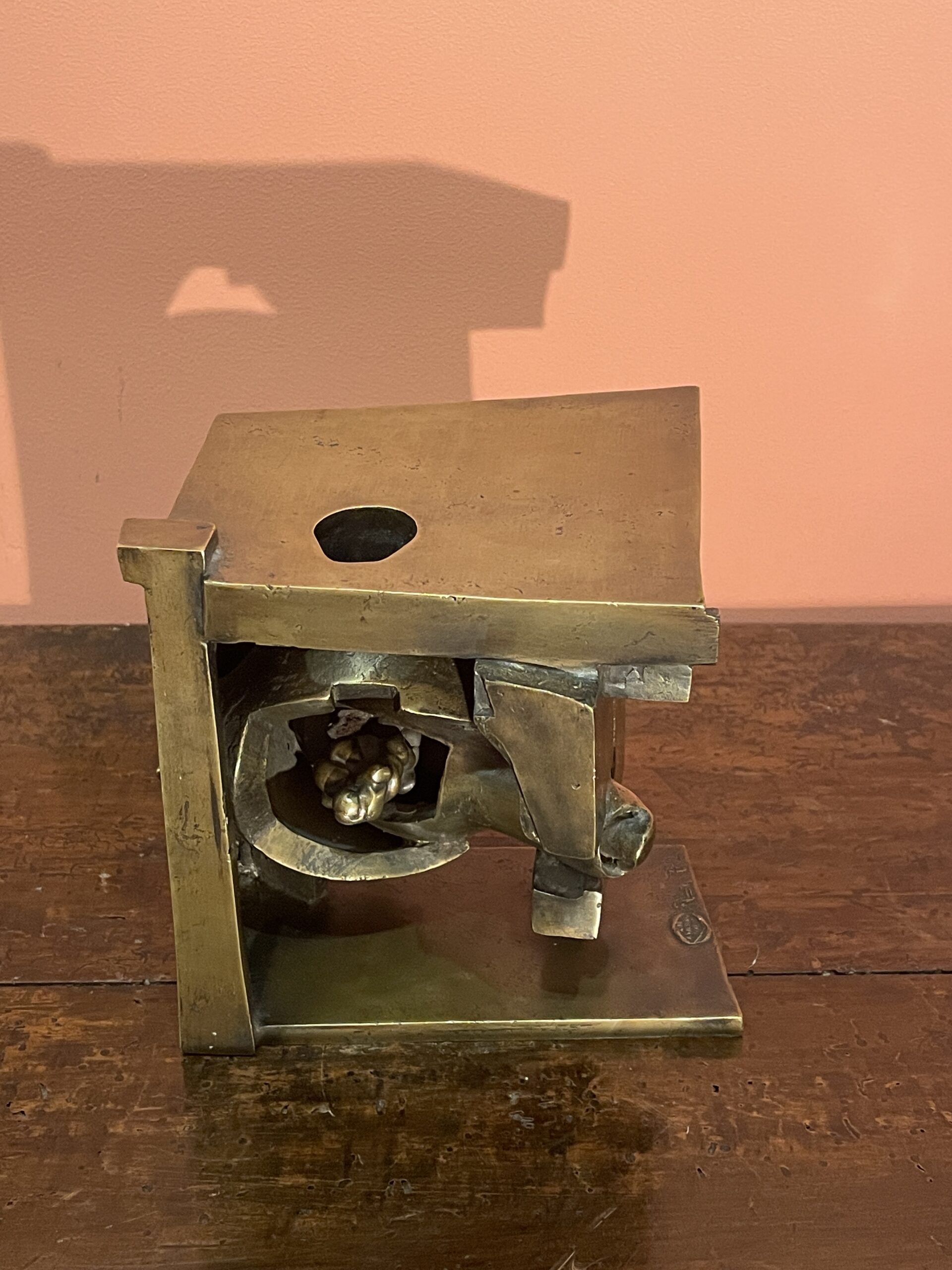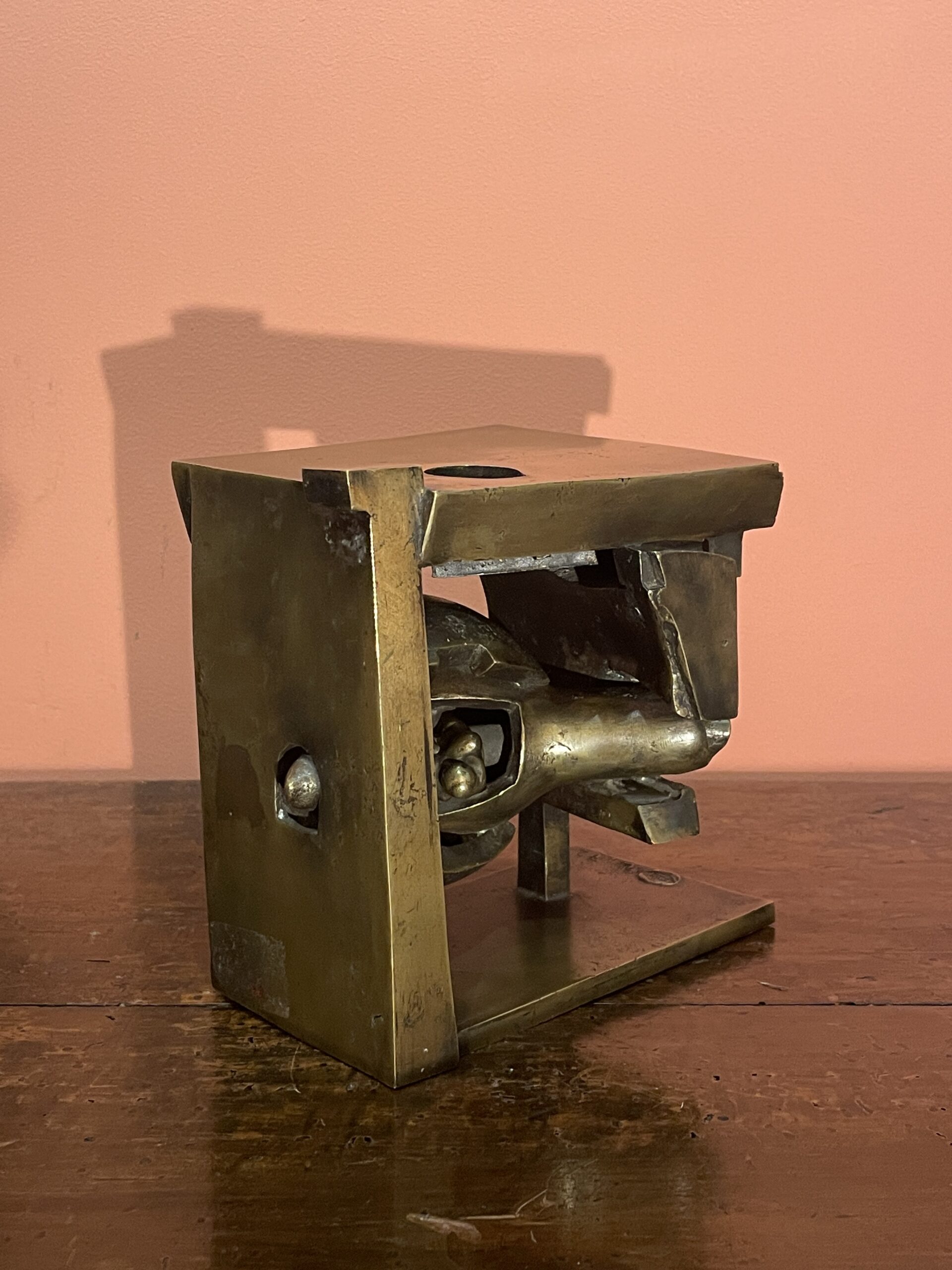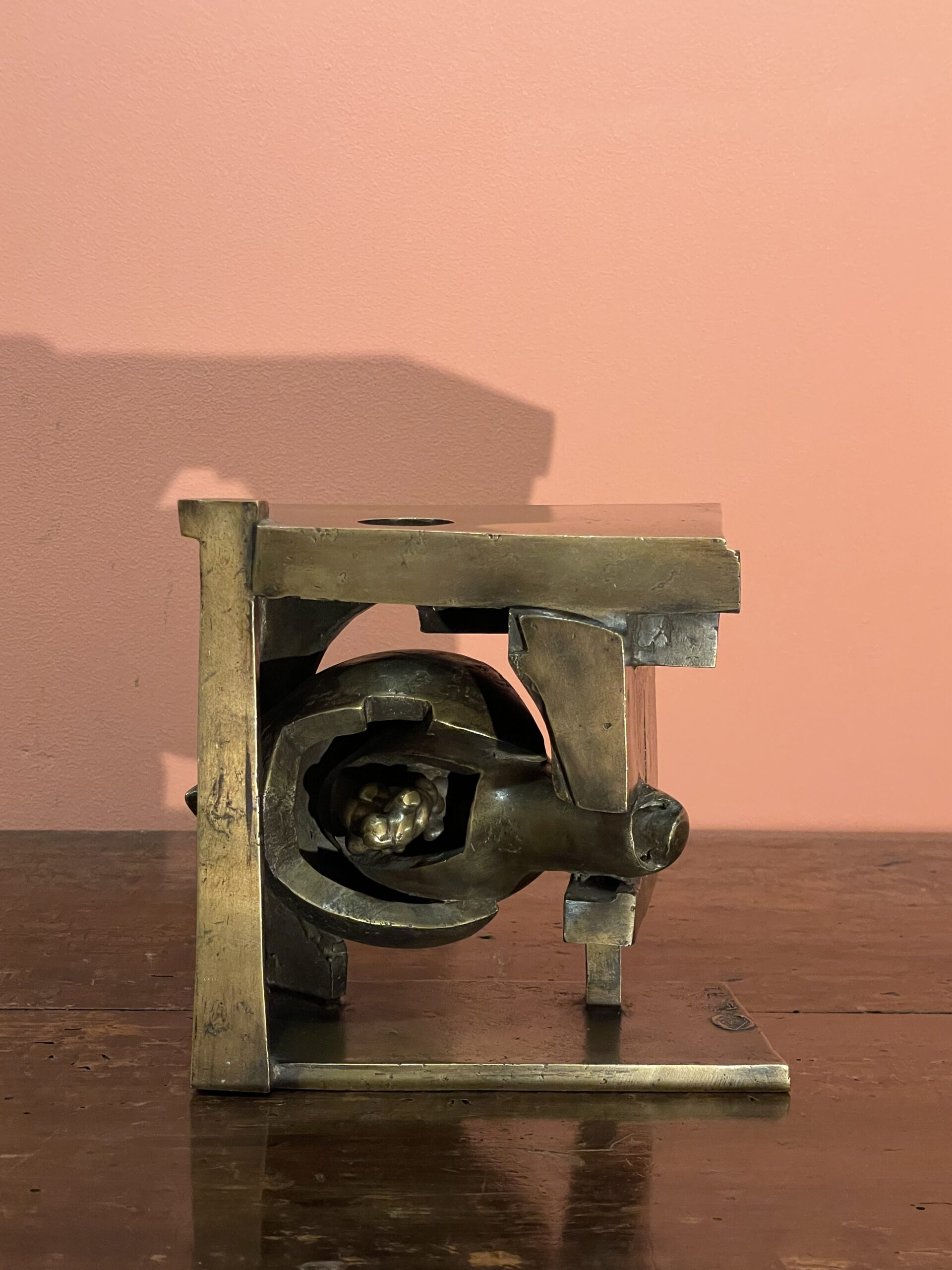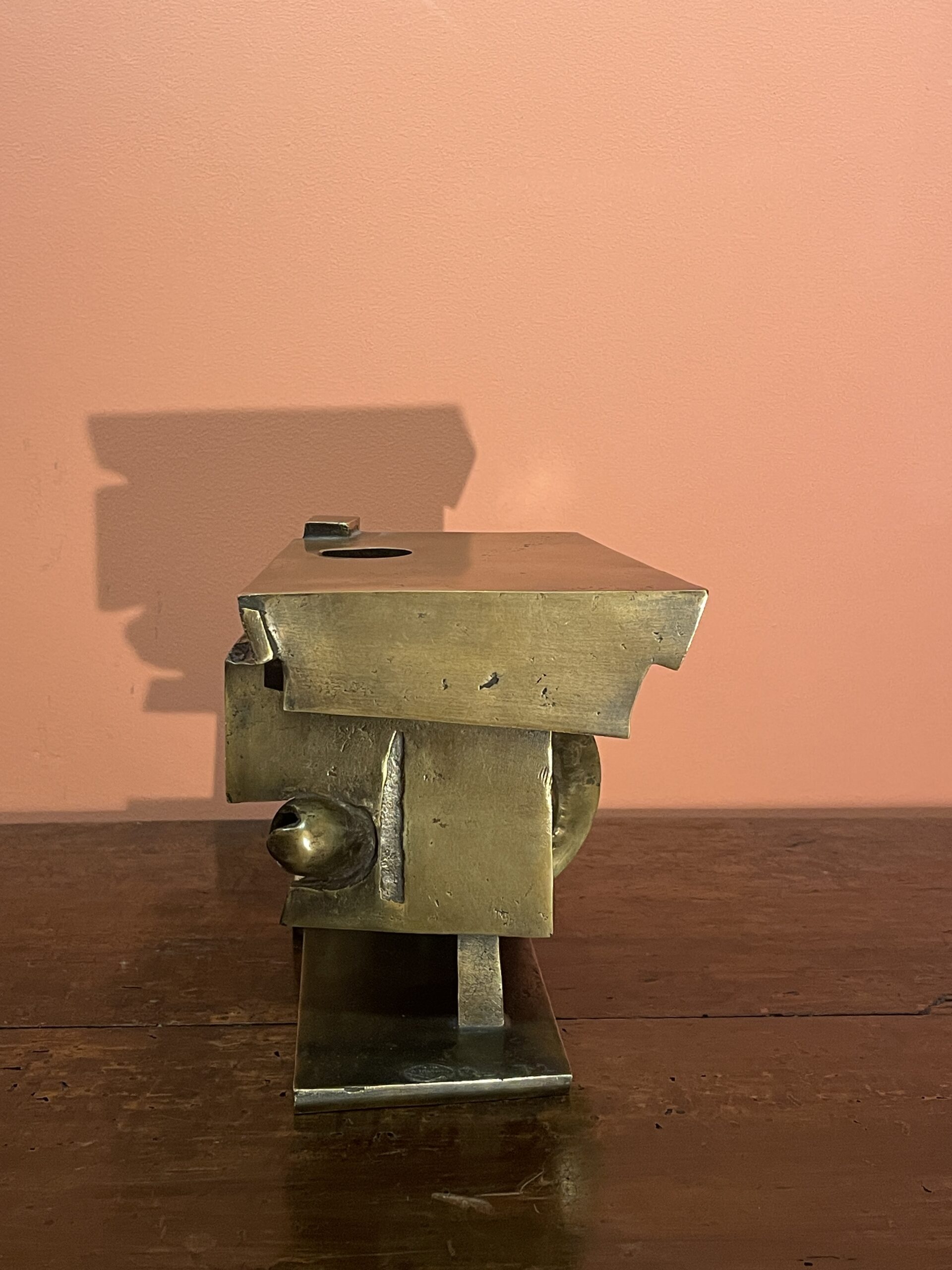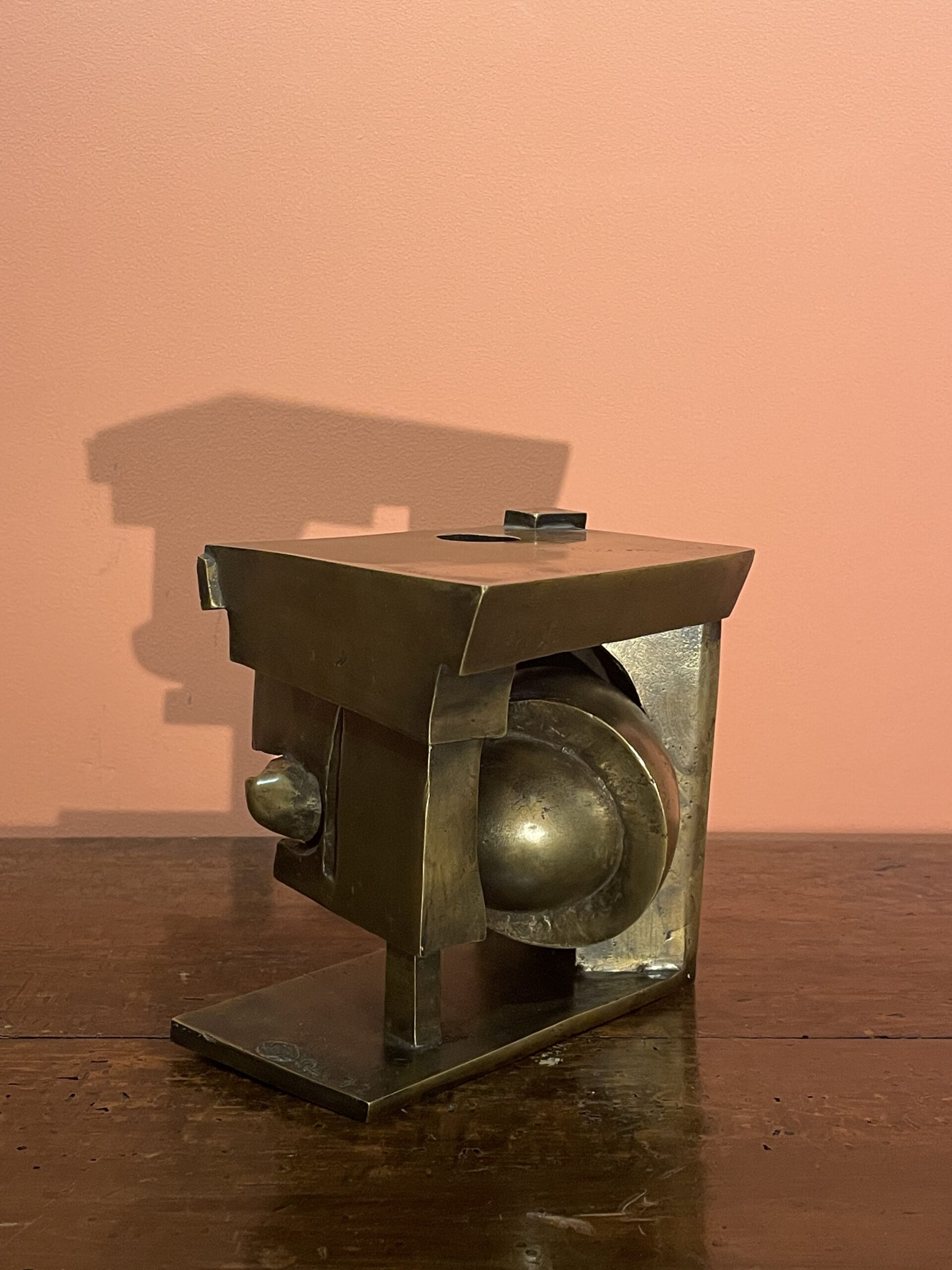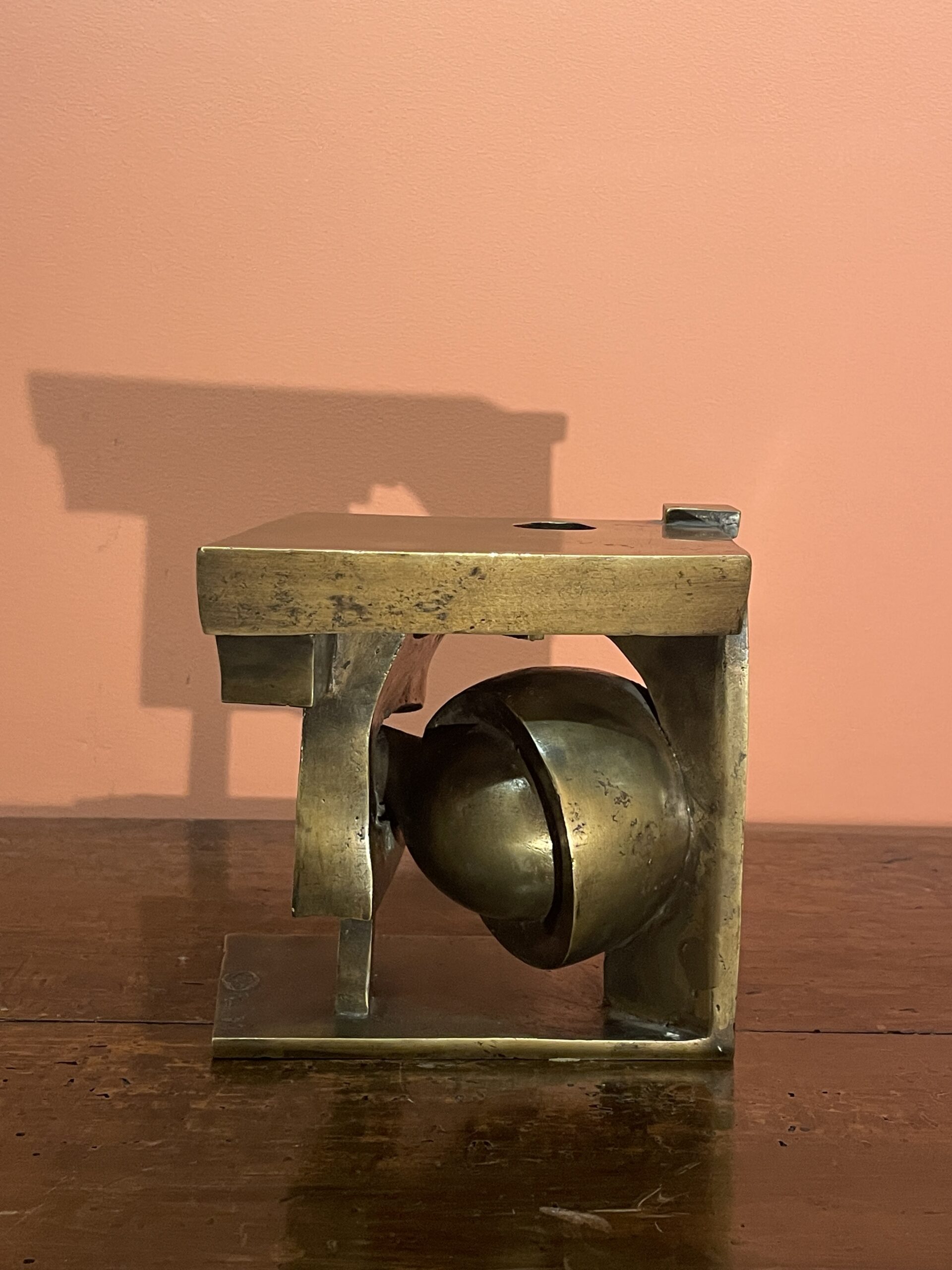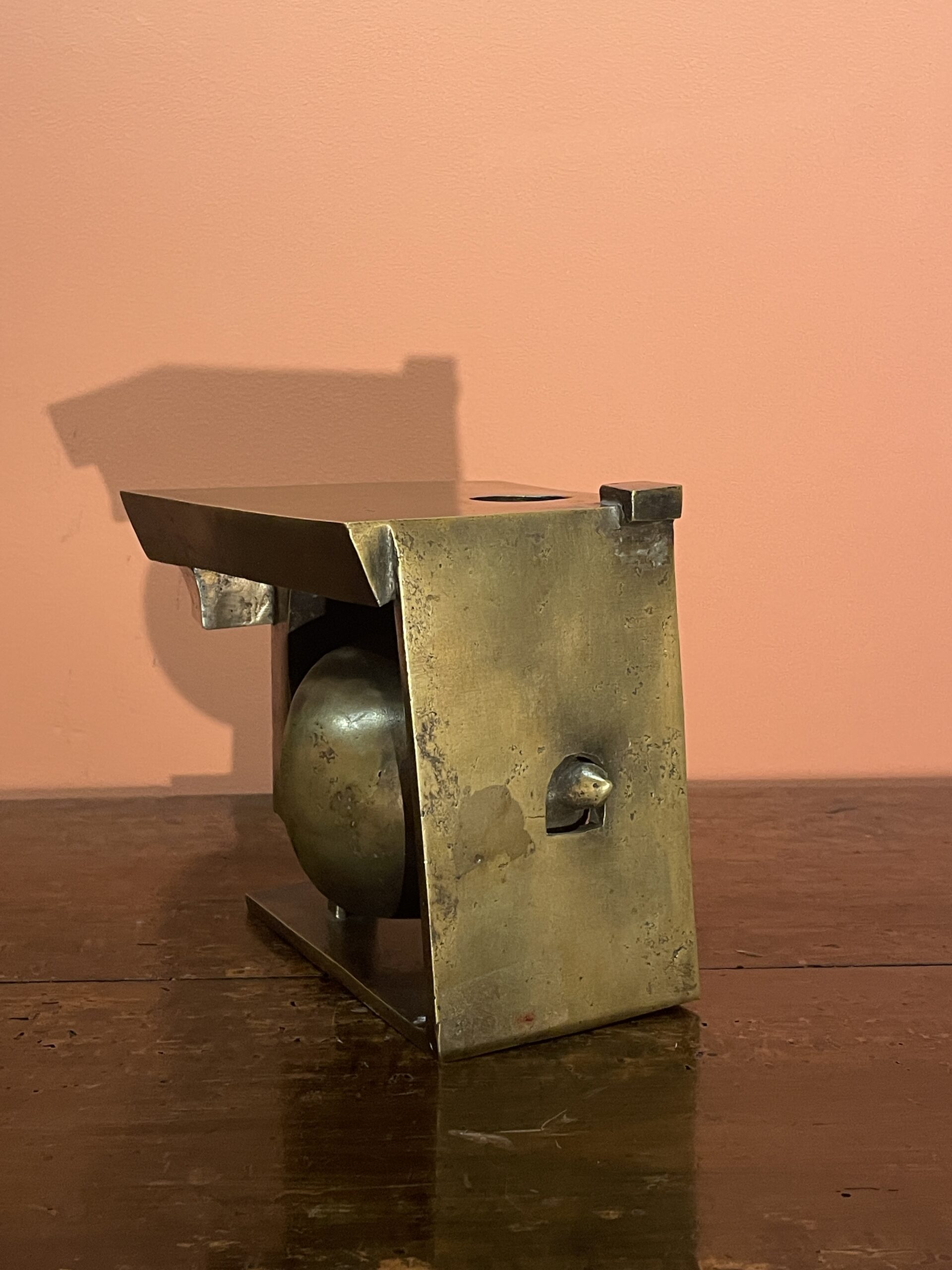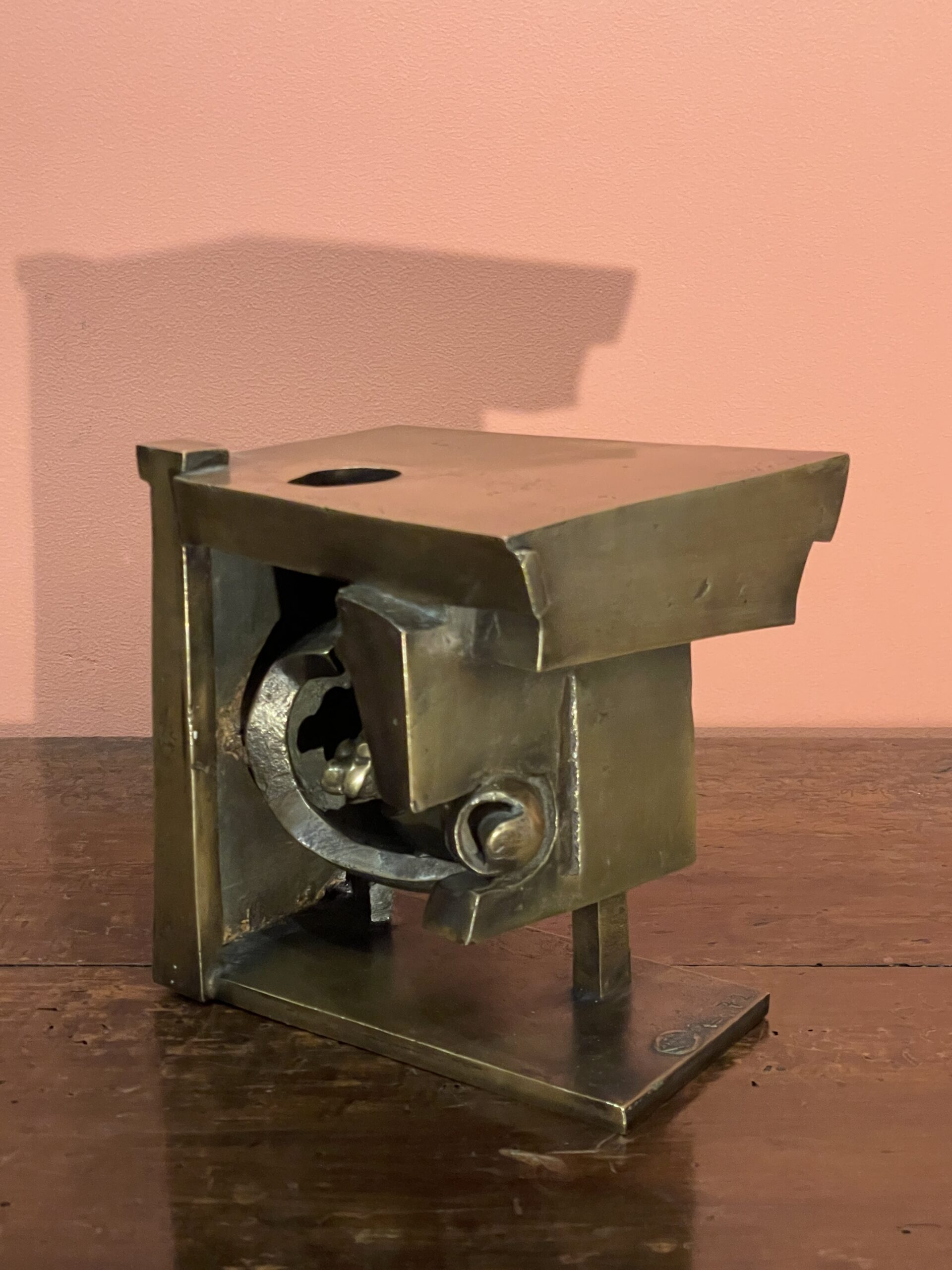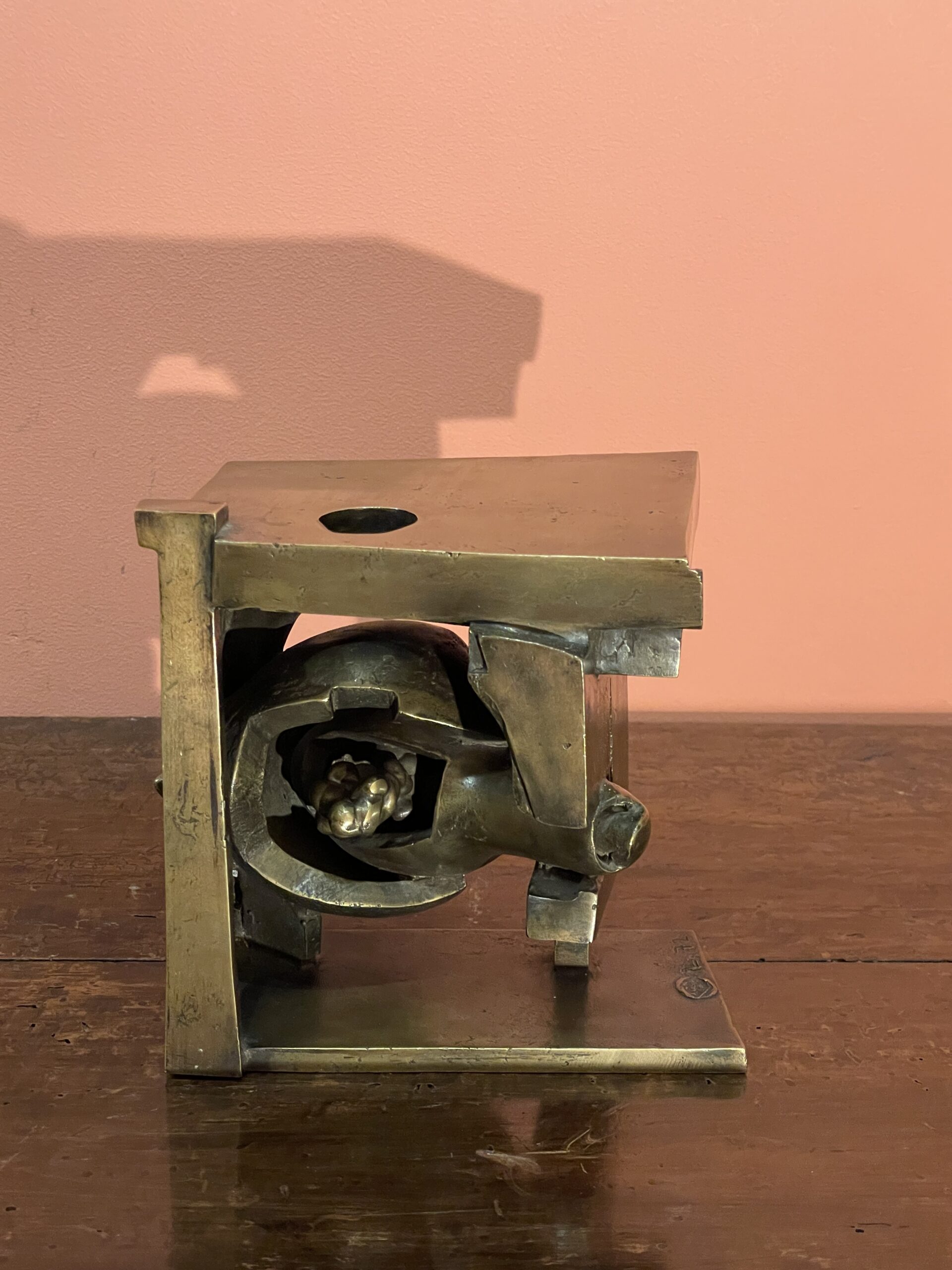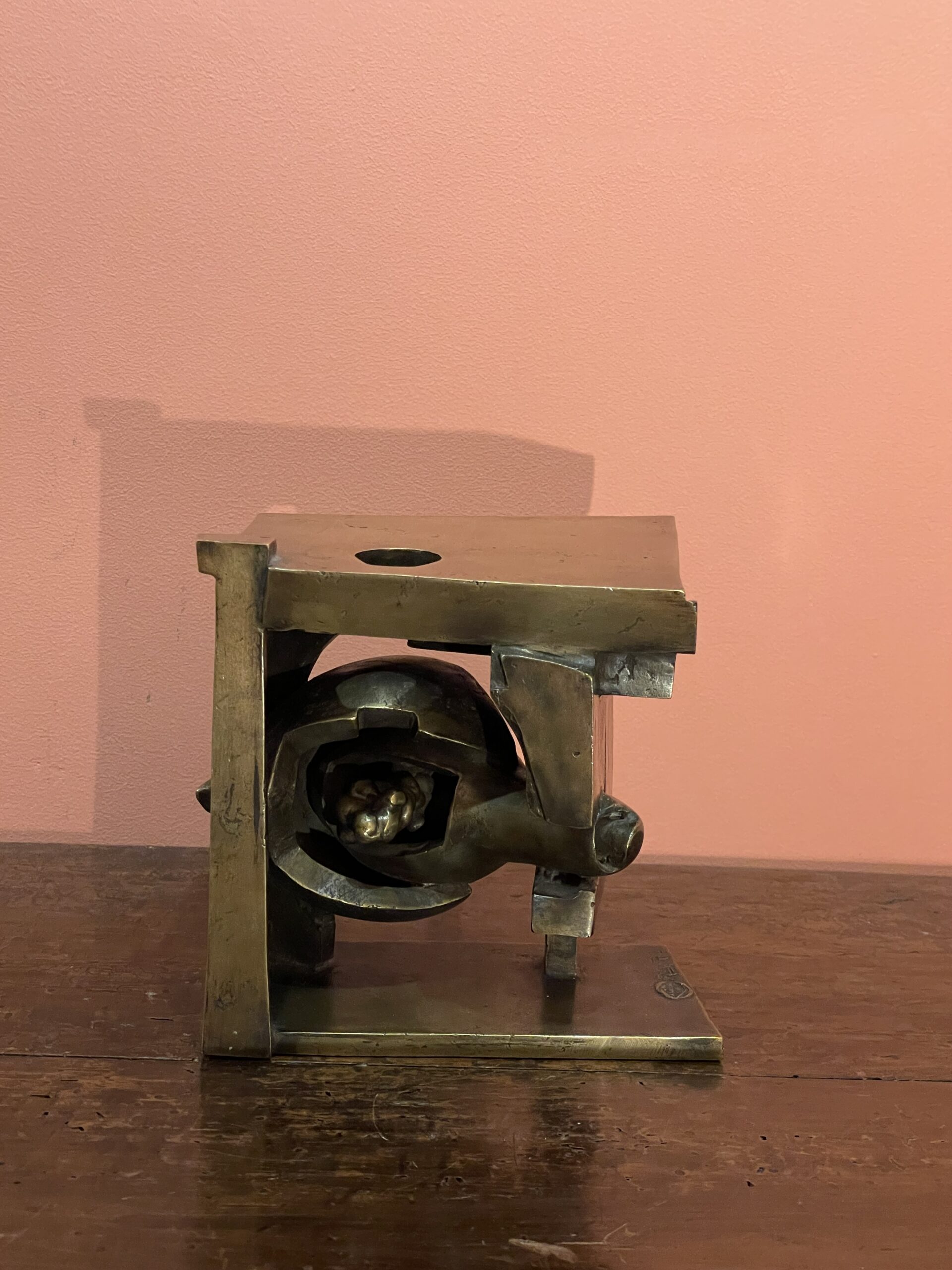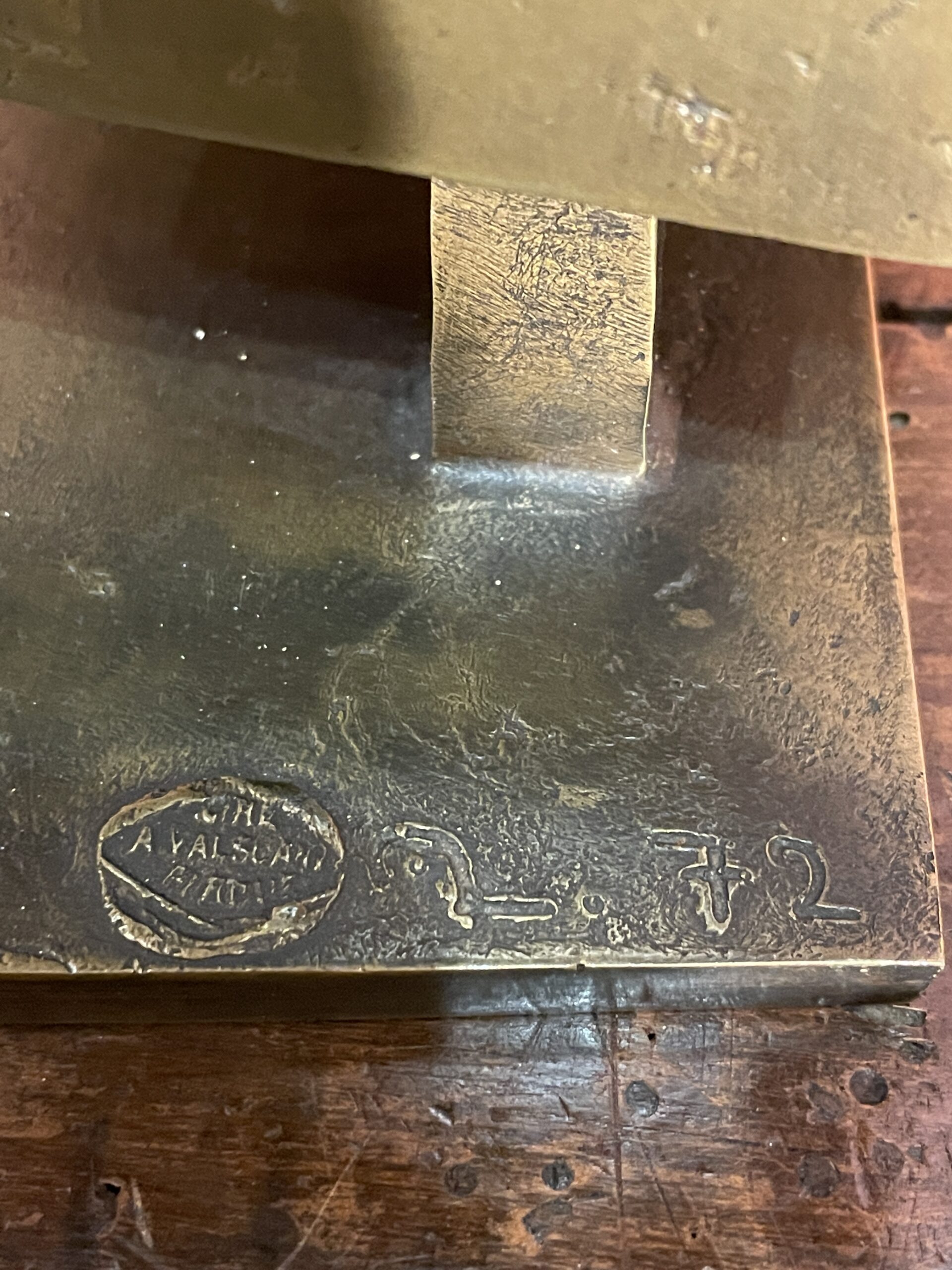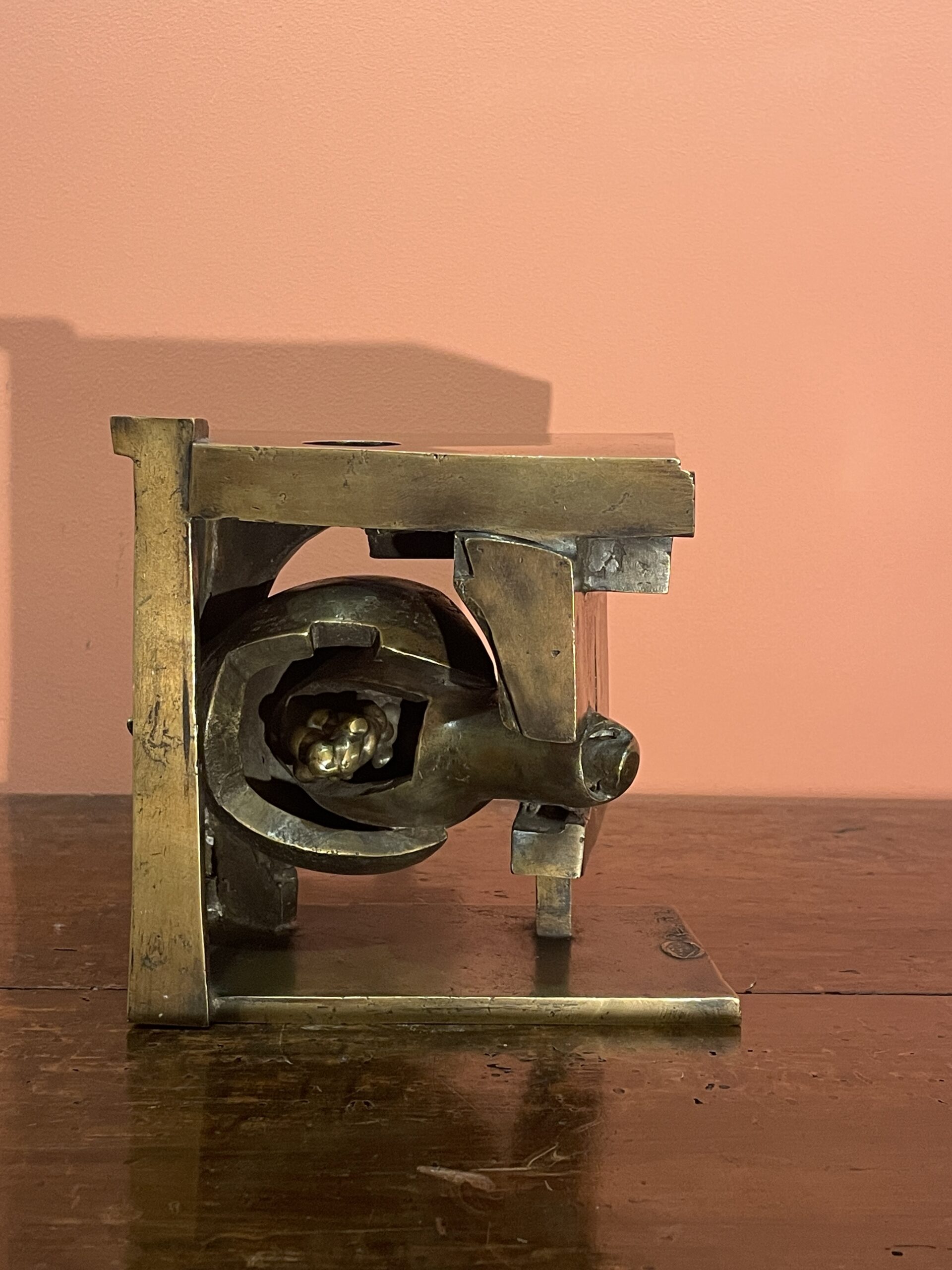Description
Biography :
Aglae Liberaki was born in Athens in 1923. She grew up with her grandfather, the important Greek publisher Fexis, but it was her father who introduced her to his early small-scale works, which depicted eagles, flutes and gyroscopes. In 1943 she was accepted into the Athens School of Fine Arts, where she studied sculpture under Michael Tombros. In 1947, after a short stay in Paris, she married the painter Yannis Moralis. The following year she gave birth to their son Konstantinos, which caused her to create a series of plaster works on motherhood, while working on woodcuts. In 1949, she held her first exhibition at Le Zappéion with the Armos group, where, having as her starting point the human form, she presented compositions representing whole bodies in physical size with abstract volumes. A year later, she began making pebble and wire jewelry and met sculptor Henry Moore in his studio, who encouraged her sculptural activity. In 1952 she began to create large colored plasters and since 1955 she shared her life and work between Hydra and France. At that time she was working with brass, and in the late 1950s and early 1960s she composed the first welded sculptures depicting mainly birds such as owls, goats and other fantastic shapes characterized by intense alterations, inflations and subtractions. Since 1963, the Hydra landscape has become increasingly apparent in his sculptures, forming angular, aggressive and dense figures with antennae, ridges and claws sometimes representing caves and sometimes referring to island morphological features. Since 1964, it gradually abandoned the processing of brass and concentrated on the cutting of stone and marble with traditional tools, radically changing the quality of its surfaces and producing curved and smooth shapes. The outer parts of his sculptures, either as clean, exuberant forms or as comfortable, soft volumes alternated with flexibility around the center. In 1972 she added the element of cracks to her creations and, after 1978, the knot structure, enriching her work with the theme of space. In 1976, she participated in the Greek pavilion at the Venice Biennale and, the same year, she was named Knight of the Order of Arts and Letters of France. The main constants and morphoplastic directions observed in her works and which established her are the emphasis on interiority, abstraction, the use of light and movement. She has exhibited her works in solo and collective exhibitions in France, Italy, the United States, Greece, Canada, Denmark, Belgium and Portugal, in places and institutions such as the Iris Clert Gallery ( 1957), the Tartaruga (1957), the Verneuil gallery (1962), the France gallery (1970), the Fabre museum (1974), the Museum of Modern Art of the City of Paris (1962), the Bourdelle museum (1971), the Grand Palais (1979) et al. She has taken part in international competitions, notably the Carrara Biennial (1967), the Ravenna Biennial (1972), the International Biennial of Small Bronze in Padua (1981), the Europalia in Belgium (1982), at the Biennial of Sculpture in Jouy sur Eure (1984). His works can also be found in public places such as the Hilton Hotel in Athens (1962), the Lycée Polyvalent Astier in Aubenas (France) (1979) and the Lycée Polyvalent Jules Verne in Mondeville, Normandy (1980). His last major exhibition was organized by the National Pinacoteca of Athens-Alexandros Soutsos Museum of Athens in 1986.
Famous Artworks:
Siderius Nuncius (1972), town hall of Montauban
Abellio (1971-1973), Paris, open-air sculpture museum
Untitled (1974), cut and polished Lorraine stone, Dunkirk, Place of Art and Contemporary Action
Untitled work (1975), cut and polished Champigny stone, Dunkirk, Place of Art and Contemporary Action.
Bibliography
Monography :
Pierre Volboudt, Liberaki, Paris, The Pocket Museum, Georges Fall editor, 1971
Catalogs :
Libéraki, Paris, Suzanne de Coninck, Editions de Beaune, 1965
Libéraki, preface by Ignace Meyerson, Montpellier, Maison de la Culture, 1974
Libéraki, Bronzes, stones, marbles, Nîmes, La Galerie (Danièle Crégut), 1975
Libéraki, Sculptures and drawings, preface by Pierre Barousse, Montauban, Musée Ingres, December 1978 – February 1979
Libéraki, Charleroi, Palace of Fine Arts, 1980
René de Solier, Libéraki, in the 4th European Biennial of Sculpture in Normandy, Contemporary Art Center of Jouy-sur-Eure, Abbey Church of Bernay

